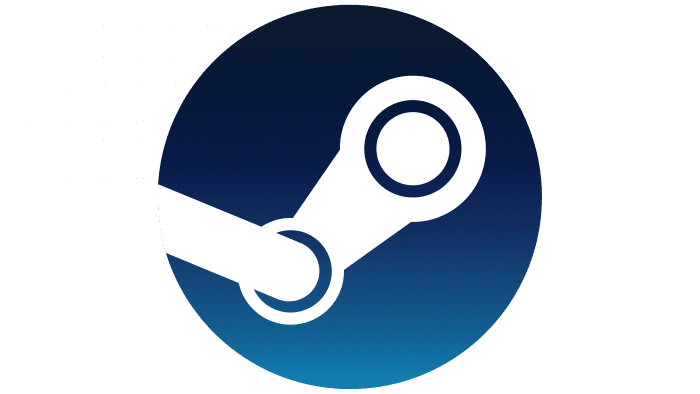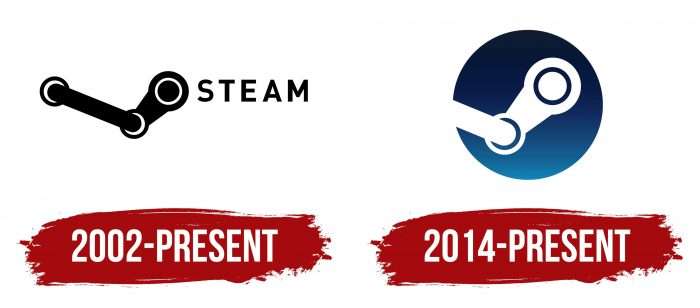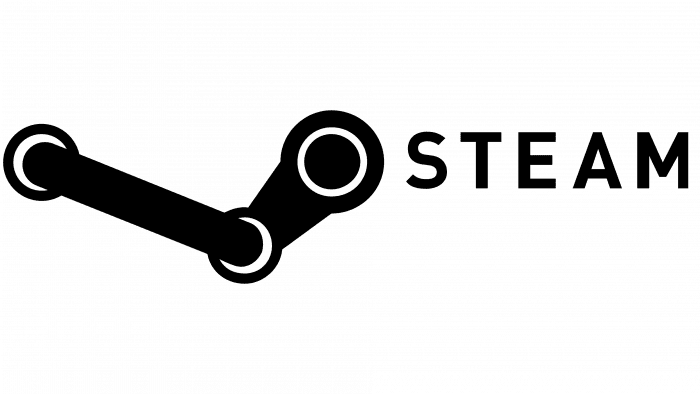“Control your reality and download the most interesting games,” suggests the Steam logo. “We have all the tools to make them work flawlessly.” Inside the service is a huge list of interesting arcades, sandboxes, and shooters ready for use.
Steam: Brand overview
| Founded: | September 12, 2003 |
| Founder: | Valve |
| Headquarters: | Washington, United States |
| Website: | store.steampowered.com |
Meaning and History
Gabe Newell, one of the founders of Valve and Steam, made his dream come true: he created a shopping service where any gamer can create a personal collection of games and transfer them to other users. At the same time, Gabe paid great attention to corporate culture because each company’s success depends on it.
At first glance, it seems that the “pipeline” theme unites all Valve products. It is enough to look at the words used for the names: Valve, steam cloud, steam work. But in reality, the proprietary concept has nothing to do with pipes. The Steam logo makes it clear that “steam” is not associated with heating networks but with a steam locomotive. At least, this is evidenced by the link of the crank mechanism, which the artists depicted.
What is Steam?
Steam is the largest distribution platform for computer games and other content, including movies, anime, soundtracks, and software. The client is available in 28 languages and is adapted to all popular operating systems. Moreover, this is not only a store but also a social network where you can contact other gamers. But initially, Steam was created in 2003 only to update games from Valve automatically.
2002 – today
The first game store icon appeared during the beta testing phase. In March 2002, Valve announced a new product and introduced a graphic and lettering emblem. The graphic part seems to be something abstract to the uninitiated user: it looks like three circles of different diameters, which are encircled by rings and connected by wide stripes. But this is not a simple set of geometric shapes, but cranks and connecting rods – the parts that set the locomotive in motion.
The word “STEAM” is written to the right of the main crank. Designers used a simple strict sans serif font for the text to not distract attention from the drawn element. The black and white palette emphasizes the minimalist composition.
2014 – today
The new Steam logo was created in 2014 but only appeared on the site in 2016. This version is missing the name of the marketplace – the text mark is used separately. The lack of lettering is compensated for by a refined design: now, the crank mechanism’s link is completely white and enclosed in a large blue circle. The color of the background shape is not uniform: from below, it acquires a light shade, and from above, it turns into a dark one. The linear gradient makes the image appear 3D.
Steam: Interesting Facts
Steam is a big online place made by Valve where you can get games for your computer. It started in 2003 and has changed a lot since then.
- How It Started: Valve made Steam update its games, like Counter-Strike. Now, you can play many games, talk to other gamers, watch game videos, and even use it for virtual reality.
- Lots of Games: Steam has tons of games, from small ones made by one person to big games made by huge companies. It’s got one of the biggest collections of games you can find online.
- Big Sales: A couple of times a year, Steam has these big sales where you can get games for a lot cheaper. People look forward to these sales.
- Choosing Games: There used to be a thing called Steam Greenlight, where gamers could pick which new games they wanted on Steam. Now, with Steam Direct, game makers can put their games on Steam if they pay a fee and pass a check.
- Talking and Sharing: Gamers can make friends, join groups, and discuss games on Steam. There’s also a place called the Workshop where you can share your game stuff, like new levels or outfits.
- Virtual Reality: SteamVR is all about games you can play in virtual reality, using special headsets to make it feel like you’re inside the game.
- Living Room Gaming: Steam has a special mode so you can play games on your TV and use a game controller, and they even tried making their gaming computers called Steam Machines.
- Play Anywhere: The Steam Deck is a new gadget from Valve that lets you take your games anywhere, like a portable game console.
- Gamers Everywhere: Millions of people around the world use Steam. It works in many languages, and you can pay with different kinds of money.
- Changing Game Buying: Steam made buying games over the internet popular instead of going to a store. It’s the biggest place for PC games, even though there are other places to buy games.
Steam has changed how we get and play games, making it easier to find new games, play with friends, and even make your game stuff to share. Valve’s Steam is a big deal in the world of computer games.
Font and Colors
The identity of the Steam platform is based on its name. The emblem creators established an associative relationship between steam and steam locomotive, depicting a system of connected cranks and connecting rods. As you know, this mechanism is involved in the rotation of the wheels: in gear locomotives, Steam moves reciprocating pistons, and these, in turn, act on the crank, which is located on the main wheels.
By the way, the crank mechanism uses plugs that served as inspiration for the name Valve. So the Steam logo is directly related to the parent company because it corresponds to the engineering theme. Designers depicted it in two versions: classic monochrome and white and blue. They are used simultaneously both on the site and as a program icon.
STEAM is only present on the first logo created in 2002. This is a sample font FF Din OT Bold, which is based on DIN-Engschrift and DIN-Mittelschrift. The original lettering was developed by the Dutch typographer Albert-Jan Pool in 1995.
In the second version, there are no inscriptions, but the drawing is more colorful. The designers have combined several shades of blue, presenting them in the form of a smooth gradient. White is used as an additional one: the elements of the crank mechanism are painted with it. In the first version of the logo, the opposite is true: the image is predominantly black, and the background is white.
FAQ
What is a Steam badge?
A Steam badge is a feature linked to user accounts and shown on their profiles. Users earn these badges by crafting game-related items on the Steam platform. Users get marketable items like emoticons, profile backgrounds, and coupons when a game badge is crafted.
Users can level up badges by collecting the same items again and re-crafting the badge, earning more items each time. This system encourages users to engage more with games and the Steam community, rewarding them with unique items that enhance their profiles.
Earning and leveling up badges adds a game-like element, motivating users to explore more games and join various events on Steam.
How do you get a Steam badge?
Collect a set of trading cards linked to a game or event to get a Steam badge. You can earn these cards by playing the game, buying them on the Steam Market, or trading them with other users. You can craft them into a badge when you have a complete set.
Go to your Badges page on Steam to craft a badge. You will see all the badges you can craft. Select a badge ready to be crafted and click the blue “Craft Badge” button. Crafting a badge gives you rewards like emoticons, profile backgrounds, and discount coupons.
The process for the Steam Sale badge is the same. During a Steam Sale event, collect special trading cards by participating in sale activities, making purchases, or other promotions. When you have the full set of sale cards, you can craft them into a Steam Sale badge. This badge will be shown on your profile, marking your participation in the event. Go to your Badges page, select the sale badge ready to craft, and click the “Craft Badge” button to complete it.
What does the Steam logo represent?
The logo represents the platform’s name by evoking the imagery of a steam locomotive. It features geometric shapes, connecting rods, and cranks, parts of the mechanism that move a locomotive. This design highlights the platform’s connection to the power and motion of steam engines.
The brand’s logo is simple and effective, conveying industrial strength. The geometric figures give the logo a modern and clean look, aligning with the brand’s identity as a leading digital distribution platform for games and software.
When did Steam change its logo?
The last change to the logo was on August 15, 2014, but it didn’t appear on the site until 2016. By 2018, the brand started using a blue circle with a gradient and a white crank mechanism detail as a client icon. The previous version of the emblem from 2002 is still part of the platform’s visual identity.
This gradual update shows Steam’s effort to maintain a consistent brand identity while adding modern elements. The new client icon, with the blue circle and white crank mechanism, gives a fresh, modern look. Keeping the older emblem ensures continuity and familiarity for long-time users.







